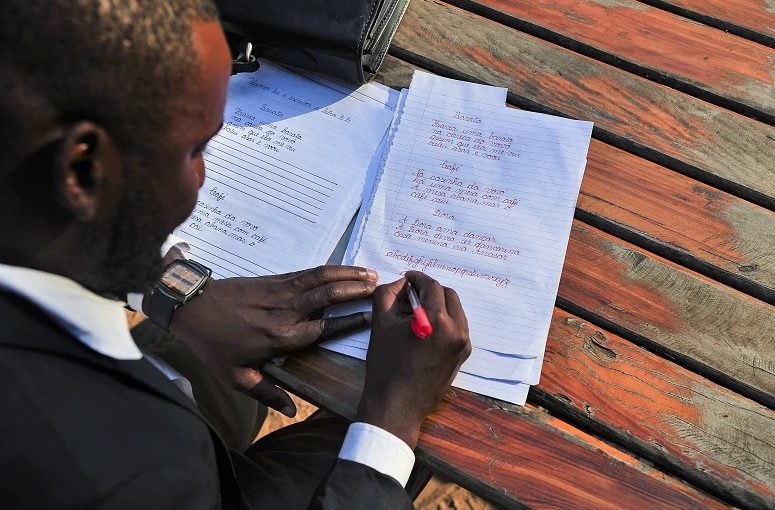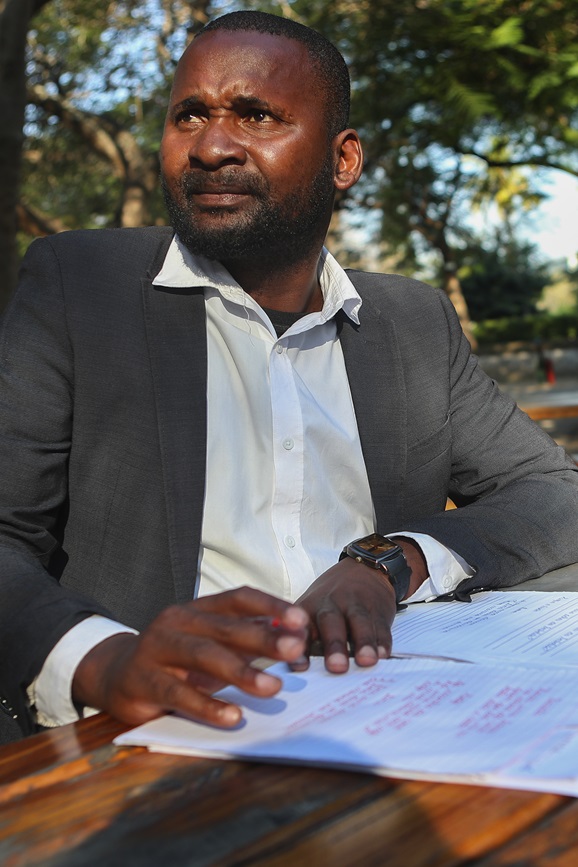Mozambique: Judges dismissed for corruption - AIM report
This low-cost notebook helps Mozambican students to “Write Beautiful”

Photo: Lusa
Primary school teacher Baptista José has launched a low-cost cursive calligraphy manual to help students in Mozambique – especially those in rural environments marked by limited access to education – to “Write Beautiful” [Escrever Bonito].
“I thought there was a need to help children who have writing problems. […] The process is simple: I write everything by hand on a regular sheet of paper and take it to the photocopier. I reproduce it and then bind it to sell,” the 37-year-old teacher told Lusa, moments after completing the production of another calligraphy notebook in the city of Matola, on the outskirts of the Mozambican capital.

Baptista has been a primary school teacher for 17 years and, during his career, he has been able to observe the handwriting limitations of most Mozambican children, especially in rural areas, where access to education remains a challenge even for adults, whether due to financial limitations or cultural obstacles.
In 2023, according to data from the Ministry of Education, almost 40% of the Mozambican population of the more than 30 million was illiterate, the majority of them women.
The teacher wants the cursive handwriting notebook to contribute to changing this statistic, giving those who want to learn how to write but do not have the means the opportunity to do so.
“Unfortunately, I don’t have open doors yet, but, if it were possible, I would replicate the project in other provinces and leave a mark there. I evaluated the books that exist on calligraphy in Mozambique and realised that they don’t have much writing content. Furthermore, the writing there is not cursive, but in print. It is difficult for the child to change from print to cursive,” the teacher explains.
It’s been almost four months since Baptista launched the project in the cities of Maputo and Matola and at the present, with at least 86 manuals already sold for less than €2 each, social networks continue to be the main means of promoting the notebooks, which are delivered door-to-door by the teacher.
“People ask for it and I go there,” Baptista says, adding that even teachers have requested his notebook, some of them with the intention of improving their own handwriting.
“This can be a low-cost alternative, even in orphanages, where there are not many resources. This manual could help a lot of people,” he concludes.

Official figures indicate that illiteracy in Mozambique affects 50.8% of the rural population and 18% of the urban population, with the provinces of Niassa, Cabo Delgado and Nampula, in the north of the country, and Tete and Zambézia, in the centre, showing the highest rates.
Statistics also reveal that it takes an average of twice as long for a child to complete primary education and that the average graduation rate in Mozambique is below 30%.













Leave a Reply
Be the First to Comment!
You must be logged in to post a comment.
You must be logged in to post a comment.